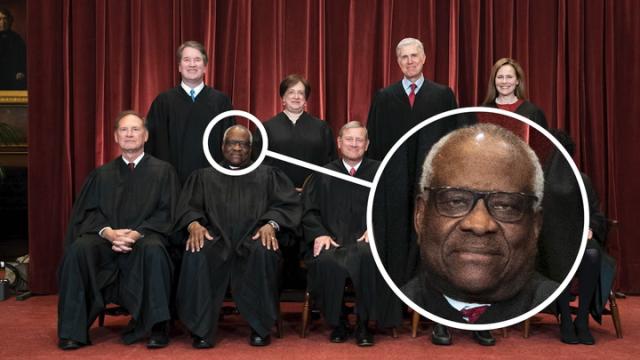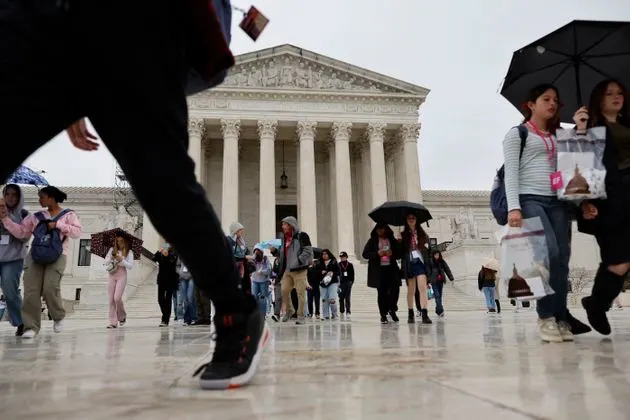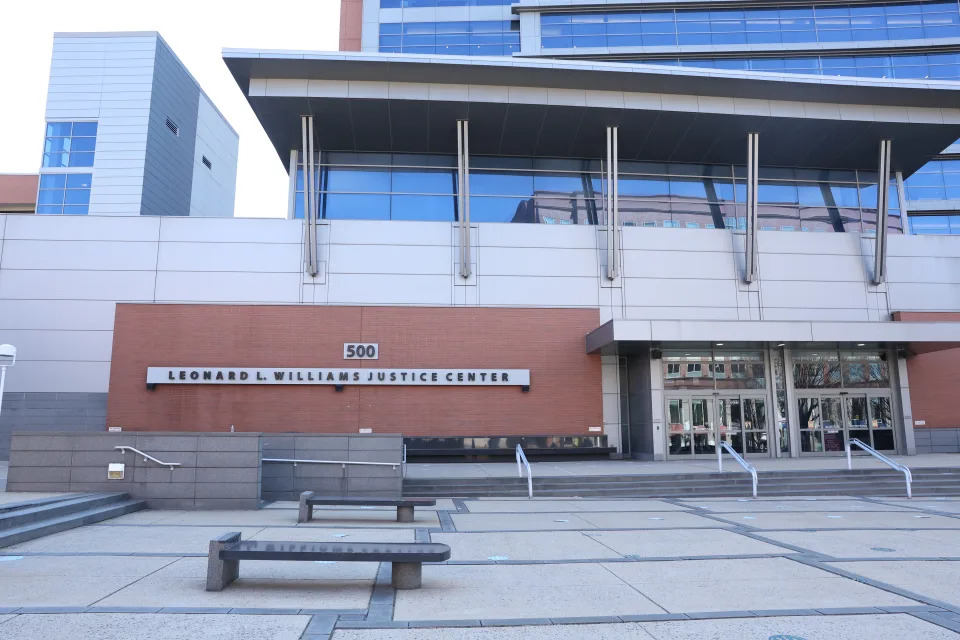Yahoo! News 360
Clarence Thomas’s luxury travel: A threat to the court’s legitimacy?
Mike Bebernes, Senior Editor – April 13, 2023

What’s happening
Supreme Court Justice Clarence Thomas’s friendship with a billionaire real estate developer has come under intense scrutiny following a report last week by ProPublica that details luxury vacations Thomas took part in over the past two decades.
According to the report, Thomas and his wife, Ginni, have enjoyed lavish trips funded by Texas billionaire Harlan Crow “virtually every year,” including global travel on Crow’s superyacht and private jet as well as annual visits to his properties in the U.S. The justice did not report any of these trips in his annual financial disclosures.
Thomas, a staunch conservative who has played a critical role in the Supreme Court’s rightward tilt in his more than 30 years on the bench, released a statement asserting that the trips did not need to be disclosed because they fell under an exception that allows for “personal hospitality from close personal friends.” Legal experts disagree over whether Thomas’s failure to report his travels with Crow violated federal disclosure laws, with some arguing that until recently the rules were too ambiguous to clearly assert that he should have disclosed them.
The Supreme Court is generally left to police itself. Unlike officials on lower federal courts, the nine justices are not bound by a formal code of ethics. Because the country’s founders wanted members of the nation’s top court to be shielded from politics, the other branches of government have little power to influence the court — other than the drastic step of impeachment.
Thomas is no stranger to controversy. His confirmation hearings in 1991 became one of the most heated political fights of the era amid accusations he had sexually harassed a colleague named Anita Hill. He has been a key conservative vote in contentious rulings around equal rights, voting access and abortion. More recently, he faced fierce criticism for refusing to recuse himself from cases that related to his wife’s participation in efforts to overturn the 2020 presidential election.
Why there’s debate
Democrats and liberal commentators have roundly condemned Thomas for failing to disclose the extent of his relationship with Crow as well as his willingness to accept such lavish hospitality in the first place. Progressive Rep. Alexandria Ocasio-Cortez said the justice’s relationship with Crow, who has given millions to fund Republicans, represents an “almost cartoonish” level of corruption and called for Thomas to be impeached. Though there’s no direct evidence that Crow’s generosity influenced Thomas’s rulings, Senate Judiciary Chairman Dick Durbin, D-Ill., said his actions were “simply inconsistent with the ethical standards the American people expect of any public servant, let alone a justice on the Supreme Court.”
Most conservatives have rallied to defend Thomas, arguing that he followed ethics rules as they’re written and insisting that even Supreme Court justices are allowed to have close friends. They also sternly reject the implication that a billionaire could alter a justice’s decision making in key cases by taking him on vacation. Many have accused Democrats of using these trips as an excuse to try to discredit Thomas, who has provided a consistent conservative bulwark against their cause for three decades.
But others say Thomas’s actions, whether or not they constitute actual corruption, bolster the view that the Supreme Court has lost its legitimacy. The public’s faith in the court reached an all-time low last year in the months following its decision to overturn Roe v. Wade. Critics say Thomas’s actions, and the lack of any accountability for them, feed the perception that the conservative justices are merely an extension of the Republican political movement.
What’s next
Durbin said last week that the Senate Judiciary Committee will act in response to the ProPublica report. It’s unclear what steps he and any other members of Congress will take. The scandal has also revived calls for Congress to establish an official ethics code for the Supreme Court, but similar efforts in recent years have fizzled due to lack of bipartisan support.
Perspectives
This is exactly what real corruption looks like
“Corruption is much more than a cartoonish quid pro quo, where cash changes hands and the state is used for private gain. Corruption, more often than not, looks like an ordinary relationship, even a friendship. It is perks and benefits freely given to a powerful friend. It is expensive gifts and tokens of appreciation between those friends, except that one holds office and the other wants to influence its ideological course. It is being enmeshed in networks of patronage that look innocent from the inside but suspect to those who look with clearer eyes from the outside.” — Jamelle Bouie, New York Times
Justices can’t be expected to be lifelong hermits
“Supreme Court justices are allowed to have friends, even if a particular friend is rich and a particular justice is conservative. Clarence Thomas has written a lot of important Supreme Court opinions during his three decades on the bench. I recommend that we spend our time addressing those and leave his personal life to him.” — Scott Douglas Gerber, The Hill
Crow’s money gives him influence that regular people could never imagine
“Crow may not have bought Thomas’s vote, but he sure paid for hundreds of hours of face time. … If you’re a rich Republican friend of the Crows, you had an opportunity to plead your case to the justice. I didn’t. Women … didn’t. Parents of children who were murdered at school because of Thomas’s interpretation of the Second Amendment didn’t. Crow doesn’t invite those parents to his private resort when the justice is around.” — Elie Mystal, The Nation
Democrats want to dismantle the conservative court by any means available
“This non-bombshell has triggered breathless claims that the Court must be investigated, and that Justice Thomas must resign or be impeached. Those demands give away the real political game here.” — Editorial, Wall Street Journal
The country’s most powerful judges shouldn’t have lower ethical standards than regular workers
“While librarians and teachers and FDA inspectors and lawyers turn down water bottles and bagels, Thomas says yes to all this? Are those pesky ethics and rules just for the little people, too? It’s demoralizing, fuels cynicism, and corrodes trust in public institutions.” — Terri Gerstein, Slate
Partisanship makes it impossible to have a real conversation about the issues at play
“There is little doubt that interpretations of Thomas’s ethics fall quite neatly into red and blue camps. … If your guy does something, it’s unprecedented corruption. If my guy does it, it’s a trivial lapse. See: sex scandals of Bill Clinton and Donald Trump.” — Mona Charen, The Bulwark
Thomas’s actions represent a lapse in judgment, not a major scandal
“Thomas was wrong not to disclose apparently free, luxurious trips as a guest of Texas billionaire Harlan Crow. He should amend the record, apologize for the lack of disclosure, pledge to observe disclosure rules more scrupulously in the future — and then move on. Thomas’s nondisclosures are an ethical lapse. They are not, however, major sins.” — Quin Hillyer, Washington Examiner
The lack of any real guardrails for justices poses a threat to the court’s legitimacy
“Ultimately, what’s even more troubling than his behavior is the fact that the Supreme Court does not have its own code of conduct, even though there is one that applies to other federal judges. And if the high court doesn’t take the steps to adopt one on its own, Congress should act swiftly to pass legislation requiring justices to adhere to ethical standards.” — Julian Zelizer, CNN
The country’s legal system will collapse if the public doesn’t believe it’s legitimate
“The Supreme Court has no army or police department that can enforce its rulings outside its walls. … For the sake of the institution and its legitimacy, the justices need to display respect for the trust that should go with the lifetime appointments they have been given — or they will continue to see an erosion of public faith.” — Editorial, Washington Post
The myth of an independent judiciary is long dead
“The unspoken assumption is that, by definition, Supreme Court justices cannot be unethical, partisan cynics. It is an absurd, self-serving mythos propagated by legal elites who have earned the American people’s abhorrence. Thomas’s ethical quagmire exposes the Supreme Court’s self-mythology for the lie that it is.” — Max Moran, The American Prospect
The most worrying thing is that Republicans see nothing wrong
“One singularly unethical justice might be a containable problem. But Clarence Thomas is not seen by conservatives as an embarrassment they’re stuck with. To the contrary, they celebrate him as their moral beacon.” — Jonathan Chait, New York
Is there a topic you’d like to see covered in “The 360”? Send your suggestions to the360@yahoonews.com.
Photo illustration: Jack Forbes/Yahoo News; photos: Chris Goodney/Bloomberg via Getty Images , Alex Wong/Getty Images, Jabin Botsford/The Washington Post via Getty Images










